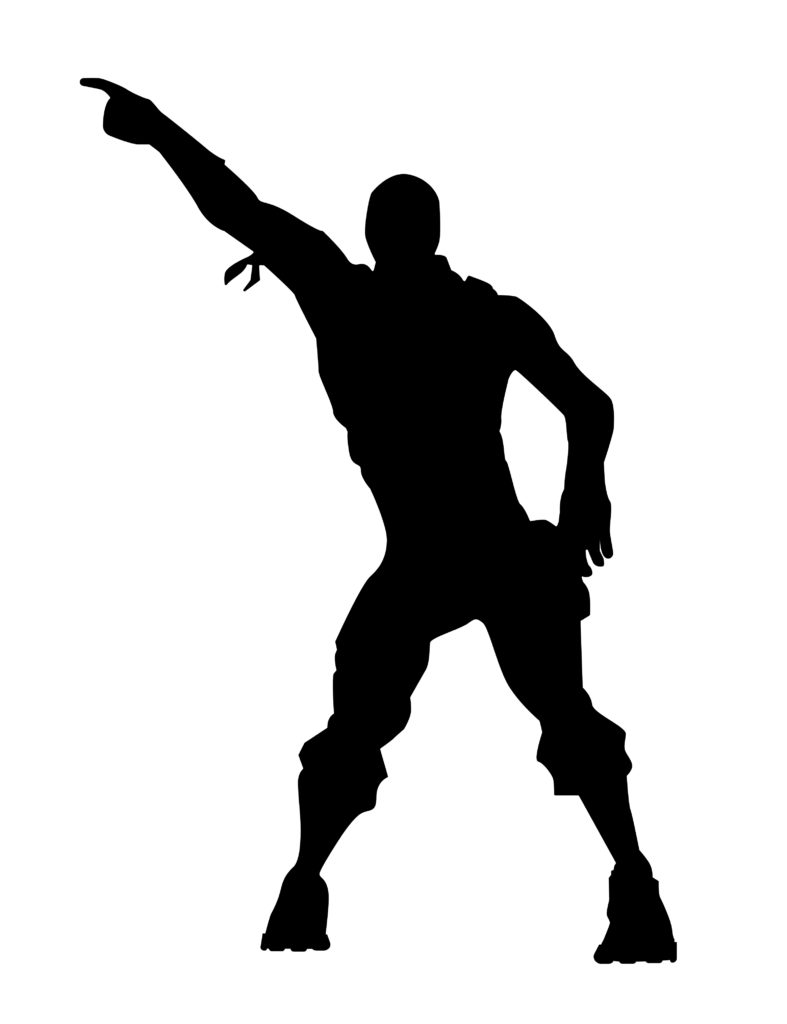“The Ninth Circuit has provided a loose guide in discerning the protectable and unprotectable elements in different types of works. But on what side does a portion of a choreographic work fall?”
 In a recently filed suit involving the popular videogame Fortnite, the Central District of California faces an important question regarding copyright law: does a copyright in a registered choreographic work extend protection to a smaller portion of the work when that portion is copied by a third party and implemented as a dance move in a video game?
In a recently filed suit involving the popular videogame Fortnite, the Central District of California faces an important question regarding copyright law: does a copyright in a registered choreographic work extend protection to a smaller portion of the work when that portion is copied by a third party and implemented as a dance move in a video game?
Owned and developed by Epic Games, Inc. (“Epic”), Fortnite is a “battle royale” style videogame where players fight to be the last person standing. Fortnite players can purchase “emotes,” which are dance moves or other gestures performed by their avatar. Plaintiff Kyle Hanagami owns a copyright registration for a choreographic work called “How Long Choreography.” Hanagami alleges that an emote called “It’s Complicated” copies “the heart” of his work, as it is the only section of the How Long Choreography that occurs ten times throughout the original.
Epic filed a motion to dismiss, arguing Hanagami fails to sufficiently allege infringement. Without disputing that the five-minute-long choreography as a whole may be protectable, Epic argues that “two seconds” of the work’s alleged commonality with the emote is not. In support, Epic points out that the Copyright Office has refused to register individual dance moves or simple routines, such as the “Carlton,” the dance made famous by the Fresh Prince of Bel-Air character of the same name. Epic emphasizes that individual elements of works are not protectable where they involve “building blocks” of creative expression.
In the alternative, Epic argues that even if the portion of the choreographic work used for the “It’s Complicated” emote was protectable, the major differences between the portion of the choreographic work and the emote would still warrant dismissal. Epic claims that the emote contains 16 counts of movement, and 12 out of 16 counts were not copied.
Circuit Precedent
The Ninth Circuit has addressed the scope of copyright protection in a number of contexts. In Bikram’s Yoga College of India, L.P. v. Evolation Yoga, LLC, the Circuit held that copyright protection did not extend to a sequence of 26 yoga poses and two breathing exercises (the “Sequence”). 803 F.3d 1032, 1036–44 (9th Cir. 2015). Finding the Sequence to be “a system designed to yield benefits and a sense of well-being,” the court drew parallels with Baker v. Selden, 101 U.S. 99, 101–02 (1879), in which the Supreme Court stated, “If the discoverer writes and publishes a book on the subject (as regular physicians generally do), he gains no exclusive right to the manufacture and sale of the medicine; he gives that to the public.” See Bikram’s Yoga Coll. of India, L.P., 803 F.3d at 1039. The court reasoned that “copyright protection for the Sequence would prevent the public from engaging with [the Sequence’s] idea and building upon it.” Id. at 1041.
A few years later, the Ninth Circuit confronted the scope of copyright protection in the context of a photograph. Rentmeester v. Nike, Inc., 883 F.3d 1111, 1116–23 (9th Cir. 2018). Jacobus Rentmeester alleged that Nike copied his iconic “Jumpman” photo of Michael Jordan when Nike created an advertisement depicting Michael Jordan in a similar configuration. Id. at 1118. After comparing the two photos, the court concluded that the works at issue were not substantially similar as a matter of law. Id. at 1121. While the subject matter of the two photographs was undeniably similar, and they shared similarities at the conceptual level, many differences weighed in the court’s finding of no substantial similarity, such as the details of the pose, setting and arrangement of the elements. Id.
In Williams v. Gaye, the Ninth Circuit emphasized the distinction between “broad” and “thin” protection in the context of a musical composition. 895 F.3d 1106, 1120 (9th Cir. 2018). “If there’s a wide range of expression . . ., then copyright protection is ‘broad’ and a work will infringe if it’s ‘substantially similar’ to the copyrighted work.” Id. On the other hand, “[i]f there’s only a narrow range of expression . . ., then copyright protection is ‘thin’ and a work must be ‘virtually identical’ to infringe.” Id. As such, musical compositions are not confined to a narrow range of expression because music is not capable of ready classification into only five or six constituent elements. Id. It is instead “comprised of a large array of elements, some combination of which is protectable by copyright.” Id.
What Does it Mean for Emotes?
As illustrated by the cases above, the Ninth Circuit has provided a loose guide in discerning the protectable and unprotectable elements in different types of works. But on what side does a portion of a choreographic work fall?
Like a novel, play, or motion picture, can a choreographic work be broken down into protectable elements of expression and unprotectable elements of ideas and concepts? If so, what does that mean for a portion of the work that is repeated throughout the work? Is it merely a “building block” of creative expression or a “simple routine” like the “Carlton” dance and thus not entitled to protection standing alone? Or is it entitled to more fulsome protection, like a musical composition?
The Central District must grapple with these questions and a slew of others. And hopefully, after it has done so, we will be left with new insights concerning how far copyright protection extends in a registered choreographic work.
Image Source: Deposit Photos
Author: sergeybitos.mail.ru
Image ID: 264418702

![[IPWatchdog Logo]](https://ipwatchdog.com/wp-content/themes/IPWatchdog%20-%202023/assets/images/temp/logo-small@2x.png)



![[Advertisement]](https://ipwatchdog.com/wp-content/uploads/2024/04/Artificial-Intelligence-2024-REPLAY-sidebar-700x500-corrected.jpg)
![[Advertisement]](https://ipwatchdog.com/wp-content/uploads/2024/04/Patent-Litigation-Masters-2024-sidebar-700x500-1.jpg)

![[Advertisement]](https://ipwatchdog.com/wp-content/uploads/2021/12/WEBINAR-336-x-280-px.png)
![[Advertisement]](https://ipwatchdog.com/wp-content/uploads/2021/12/2021-Patent-Practice-on-Demand-recorded-Feb-2021-336-x-280.jpg)
![[Advertisement]](https://ipwatchdog.com/wp-content/uploads/2021/12/Ad-4-The-Invent-Patent-System™.png)






Join the Discussion
One comment so far.
Anonymous
September 2, 2022 04:22 pmhttps://www.law360.com/articles/1524740/epic-shakes-choreographer-s-fortnite-dance-copyright-row